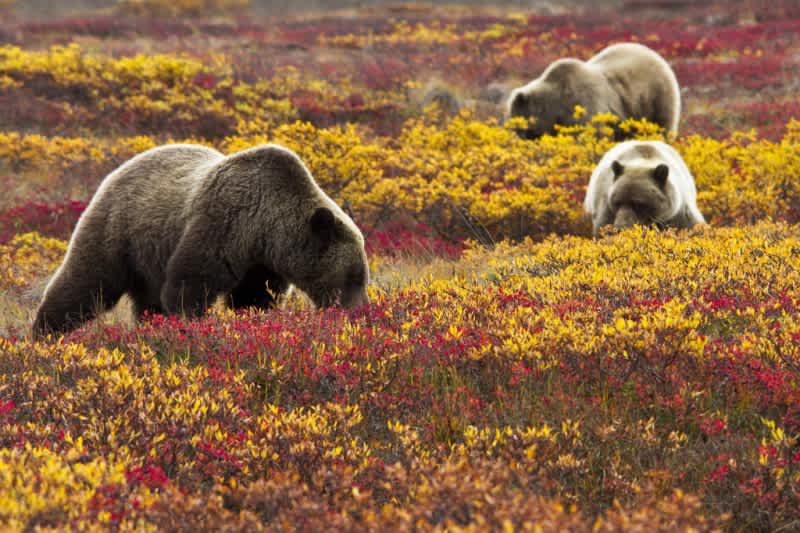Study: Wolves Impact Yellowstone Elk Population, Leave More Berries for Grizzlies
OutdoorHub Reporters 07.30.13

A new study published in the Journal of Animal Ecology has found that the decline in Yellowstone National Park’s elk due to the reintroduction of wolves has affected another one of the area’s top predators in a roundabout way–the famous park’s grizzlies are now eating a larger portion of berries than before. The study, led by Oregon State University professors William Ripple and Robert Beschta, found that the likelihood of finding berries in grizzly scat significantly increased in the years following the reintroduction of wolves.
“The grizzly bear uses some of the same plants that the prey of the wolf uses,” Ripple told the Los Angeles Times. “The reintroduction of one top predator is potentially affecting another top predator through this food web.”
For almost 70 years wolves had been absent from Yellowstone National Park, leaving species like elk to prosper and sometimes even become overpopulated. The gray wolf was reintroduced to the area in 1995 and elk numbers subsequently declined, but scientists noticed a resurgence of plant life such as cottonwood and aspen. In testing grizzly scat over a 19-year period, researchers found that the bears are consuming more berries as the number of berry-feeding elk decreases.
While the bears do seem to be fattening up on this year’s fruit crop, researchers warn that it may not be entirely beneficial to the animals in the long run–bears are turning to berries because their other food sources seem to be lacking.
Other studies state that Yellowstone’s elk, once abundant, are now struggling to maintain their populations. The elk’s recent problems may be due to a dramatic decline in one of the bear’s other major food sources, the cutthroat trout. Non-native trout species have been competing with the cutthroat in a battle for survival within the park, leading officials to halt most angling opportunities for the fish. For now, it has not been enough to stop the decline and bears have turned to preying on elk calves as a result, putting them directly in competition with wolf packs.
A study headed by biologist Arthur Middleton found that bears and drought account for the highest impact on elk numbers, with wolves a distant third. Scientists are concerned that with the decrease in trout, Yellowstone’s bears may have problem sustaining their diet with other food sources. Berries will also not provide a stable food source for bears, as they will take time to regrow.
Overall researchers say that the reintroduction of wolves to the Yellowstone ecosystem, one of America’s most prized spots of wilderness, will leave a lasting mark beyond elk and bears. Plant life once kept in check by elk has started to return in great numbers, supporting increased populations of the animals that thrive on them. Park officials reported a curious increase in the number of beavers as well.
“We’re in the early stages of this ecosystem recovery. This is what we call passive restoration,” Ripple said. “We put the wolf back in and then we let nature take its course.”

